2025 Seminar on Criminal Protection of Intellectual Property from an Enterprise Anti-Fraud Perspective: Jointly Fortifying the Defense Line of Criminal IP Protection | Dacheng Shanghai · Event Report
Release date:2025-07-17
Against the backdrop of innovation-driven development, intellectual property has become the core lifeline for enterprises to succeed in the future. However, internal fraudulent behaviors are increasingly evolving into potential hidden risks that steal and infringe upon enterprises' valuable intellectual property rights, their harm even exceeds that of external infringement. Therefore, how to resolve this phenomenon has become a hot topic in the industry. On July 16, 2025, the "Seminar on Criminal Protection of Intellectual Property from an Enterprise Anti-Fraud Perspective", organized by the Anti-Fraud and Criminal Risk Control Specialized Research Committee and the Intellectual Property Specialized Research Committee of the Shanghai Lawyers Association, was successfully held at Dacheng Shanghai Law Office. This seminar was chaired by Lawyer Gu Wei, Deputy Director of the Anti-Fraud and Criminal Risk Control Committee of the Shanghai Lawyers Association and Chairman of the Dacheng Shanghai Supervision Committee.
This seminar aimed to provide enterprises with compliance development ideas and practical operational directions under complex business environments. Participating experts engaged in in-depth discussions and analyses on topics such as effectively identifying fraud risks, accurately wielding criminal legal weapons, and defending the core intellectual property rights upon which enterprises rely for survival and development.
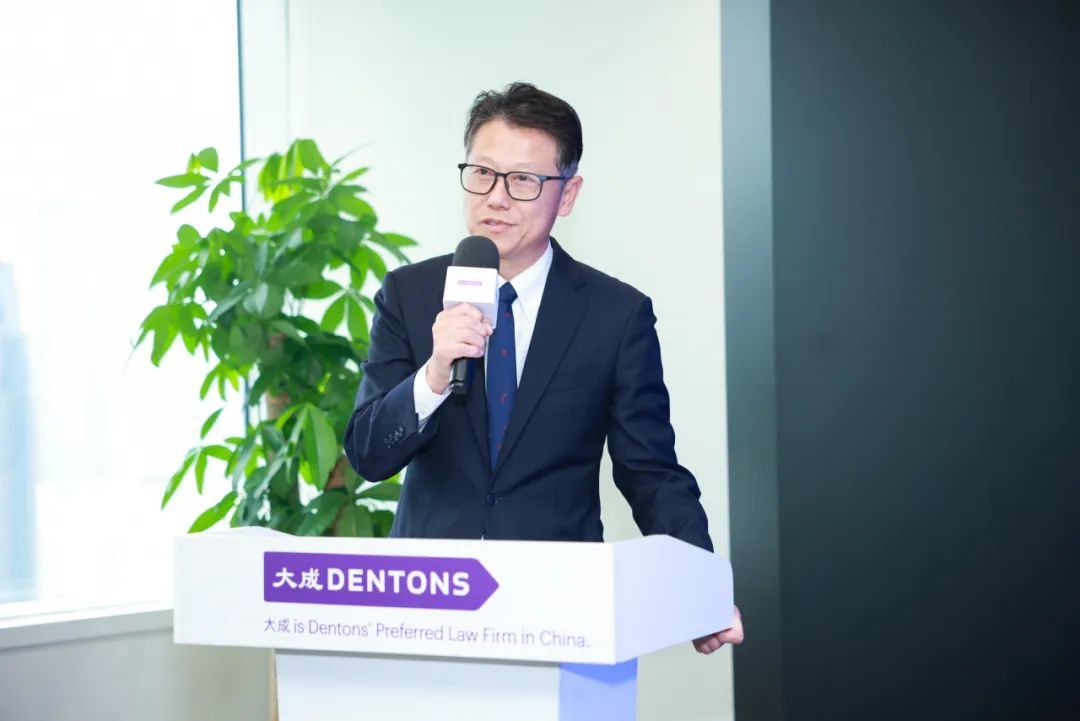
Lawyer Liao Mingtao, Vice President of the Shanghai Lawyers Association and Party Secretary of Huiye Law Firm, first extended a welcome and gratitude to the attending guests. He pointed out that fraudulent behaviors implemented through improper means during enterprise operations would substantially affect the fairness of market competition and the survival foundation of enterprises. For technology-intensive industries, such risks are often accompanied by derivative issues such as the loss of core talents, urgently requiring mitigation through improved compliance mechanisms. He called upon legal professionals to collaboratively utilize legal measures to safeguard the legitimate rights and interests of intellectual property and effectively reduce systemic risks. He also wished the seminar a success in achieving its expected outcomes.
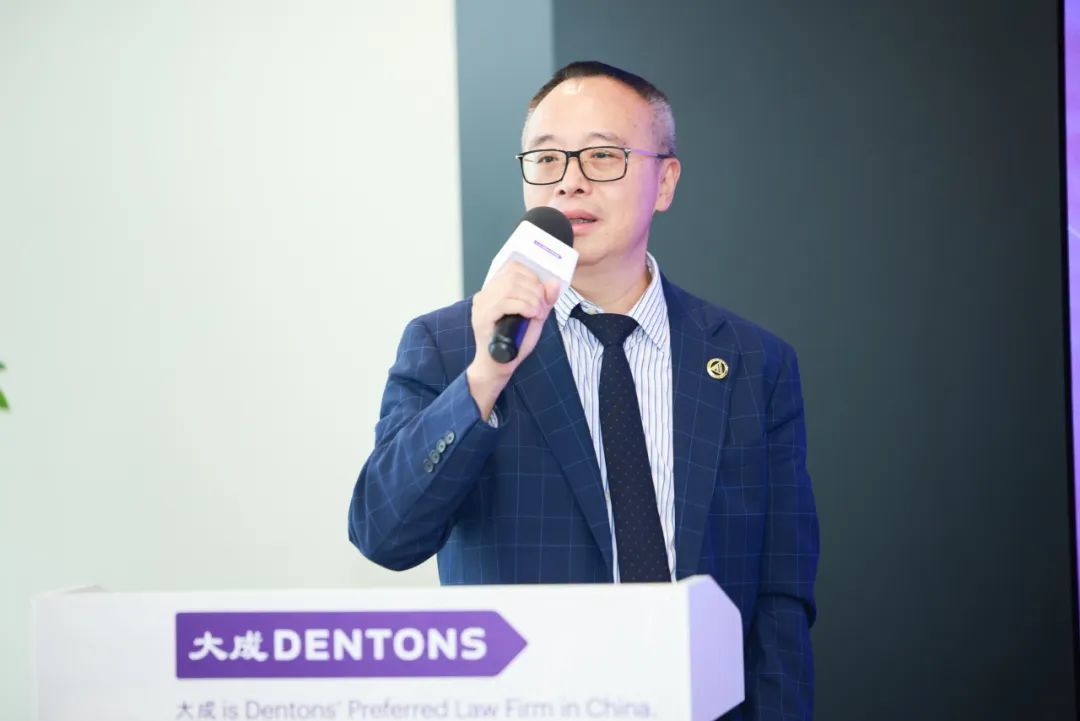
Lawyer Chen Jun, Director of Dacheng Shanghai, expressed welcome to the attending guests in his opening remarks. He pointed out that trade secrets are increasingly becoming the core competitiveness of enterprises in the current business environment. Faced with the systemic threat posed by fraudulent behaviors to intellectual property protection, legal professionals need to work collaboratively to explore solutions. In practice, Dacheng Shanghai has observed that trade secret leakage has become a common risk point triggering issues like enterprise operation interruption. Lawyer Chen looked forward to the seminar gathering the wisdom of experts to jointly propose feasible insights to tackle this challenge and wished the conference a success in achieving its expected outcomes.
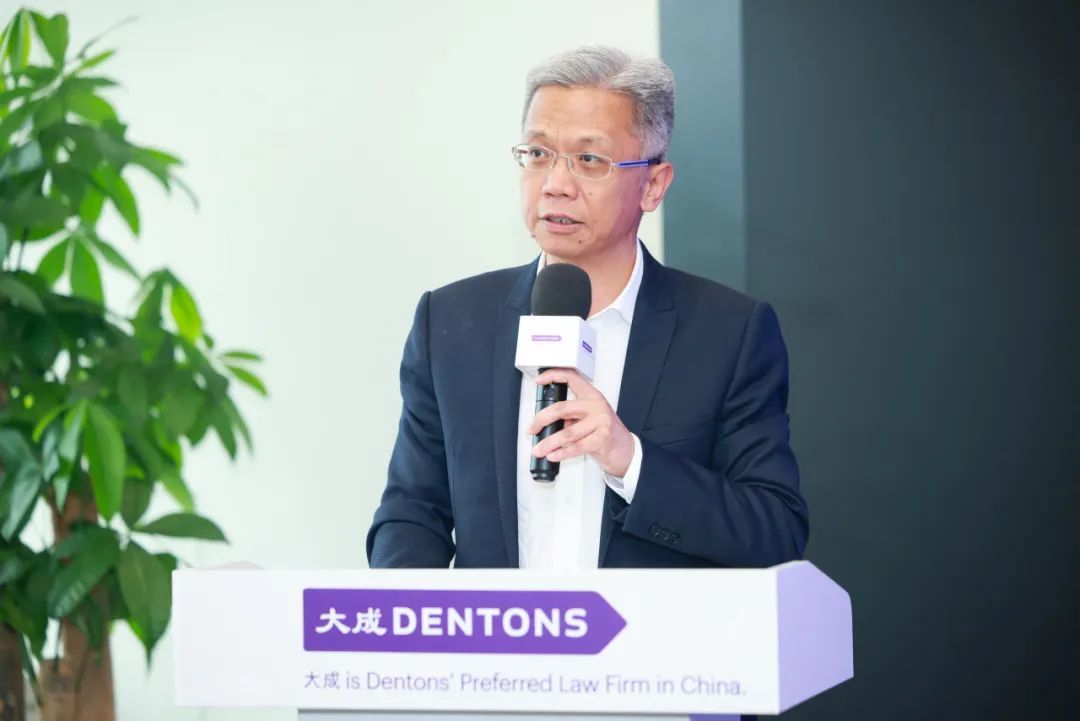
Lawyer Liu Feng, Director of the Intellectual Property Committee of the Shanghai Lawyers Association and Senior Partner at Dacheng Shanghai, delivered the keynote speech titled "Misunderstandings About Trade Secrets and Difficulties in Criminal Protection". He first outlined the classification of trade secret types and shared the current status of civil cases involving trade secrets in recent years. He pointed out that the average plaintiff win rate is showing a declining trend year by year, while such cases are gradually shifting towards criminal cases with increasing societal attention. Lawyer Liu then elaborated on internal employees being the primary source of trade secret infringement and specifically listed six common misunderstandings: Misunderstanding 1: Employees mistakenly believe that obtaining trade secrets through company management oversights does not constitute infringement. Misunderstanding 2: Employees mistakenly believe that modifying trade secrets does not constitute infringement. Misunderstanding 3: Employees mistakenly believe that sending emails containing company information to personal email boxes when leaving does not necessarily constitute trade secret infringement. Misunderstanding 4: When the company fails to pay sufficient compensation, employees claim they can refuse to fulfill the non-compete agreement. Misunderstanding 5: The breaching party believes that paying liquidated damages exempts them from continuing to perform the non-compete agreement. Misunderstanding 6: Presuming infringement is established solely based on the similarity between the other party's product and one's own. Regarding criminal protection practices, Lawyer Liu analyzed two major current difficulties: the high case-filing threshold and the high burden of proof. Combining the methodology for defining "secret points" from the "Tuna Fishing Vessel Hull Lines Trade Secret Case", he explained that protecting trade secrets requires meticulous attention to detail at every stage. The report concluded with an in-depth discussion on the judicial discretion standard of "no substantial damage caused" in criminal offense determination.
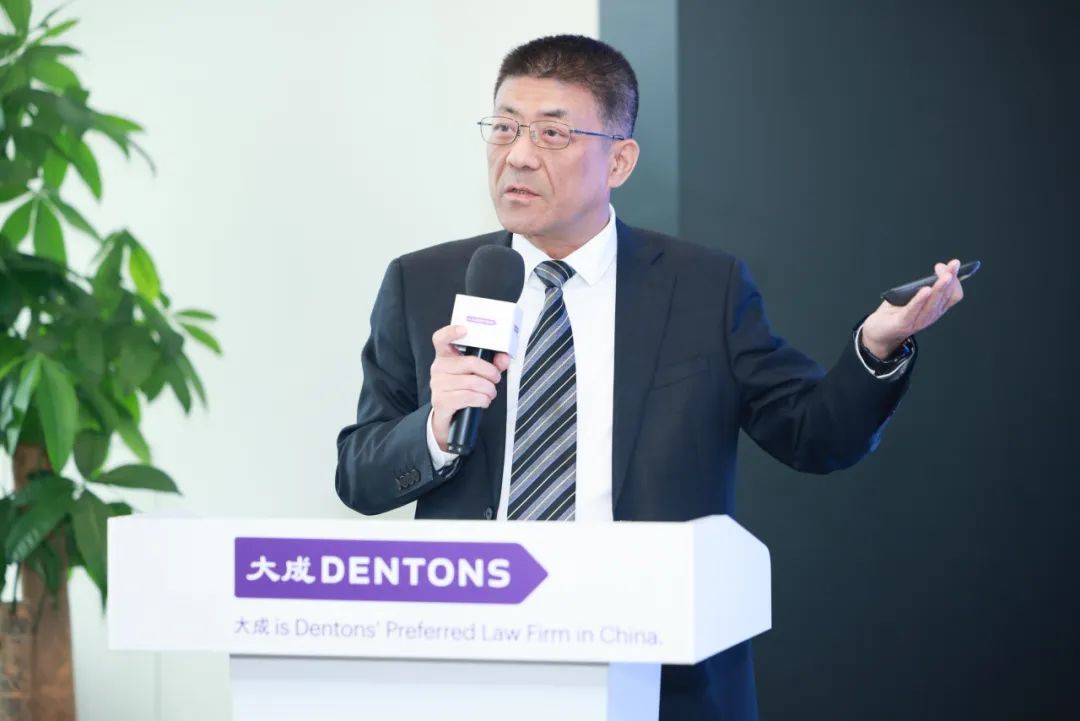
Lawyer Li Tianhang, Deputy Director of the Anti-Fraud and Criminal Risk Control Committee of the Shanghai Lawyers Association and Senior Partner at Huiye Law Firm, presented the keynote speech "The Art of Attack and Defense in Trade Secrets - Enterprise Trade Secret Compliance and Criminal Risk Control". He first analyzed the current status of criminal litigation cases involving trade secret infringement in recent years, noting a significant increase in case volume, particularly technical trade secret cases frequently occurring in East China and the Pearl River Delta regions, while operational-type cases are relatively fewer. Lawyer Li then dissected the current difficulties and underlying causes faced by enterprises in trade secret compliance management and criminal risk control. In his speech, he proposed the "Art of Attack and Defense" framework, emphasizing the need for enterprises to construct organizational control systems (covering improving confidentiality systems, strengthening confidentiality measures, and environmental monitoring mechanisms) and robust personnel management systems (including background checks and confidentiality commitments for new hires, as well as audits and behavioral supervision for current and departing employees). He concluded that trade secret protection is an important mechanism balancing technological innovation and market competition, but negotiation and communication are often the preferred means to resolve related disputes.
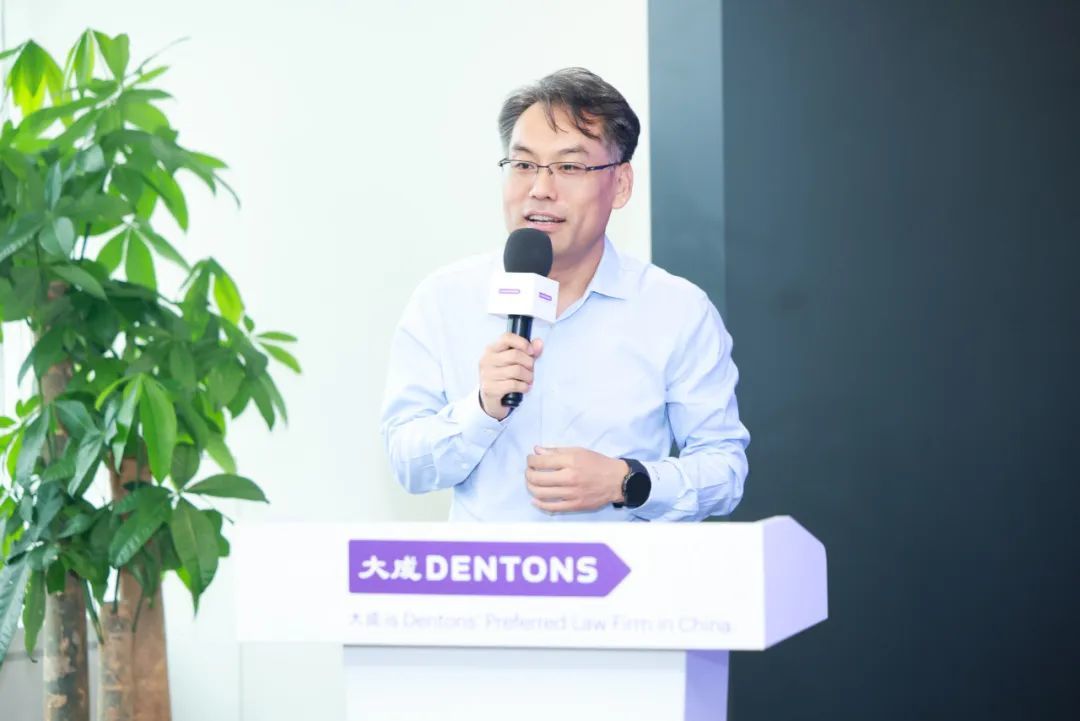
Lawyer Sha Haitao, Member of the Intellectual Property Committee of the Shanghai Lawyers Association and Senior Partner at Jincheng Tongda & Neal (Shanghai), presented the thematic report "Key Points in Enterprise Intellectual Property Anti-Fraud and Criminal Judicial Protection". He analyzed the diversification trend of intellectual property infringements in recent years and the frequent risk challenges emerging in new business formats. He pointed out that in practical cases handled, trademark infringement predominates, while patent counterfeiting cases, though relatively lower in proportion, cause significant damage to enterprises. The report further clarified typical infringement characteristics of enterprise intellectual property criminal cases: the proportion of trademark rights infringement remains high; employee infringement occurs with notably higher frequency; technology innovation enterprises are the primary victims; high-tech criminal methods result in continuously increasing difficulties in evidence collection. Subsequently, Lawyer Sha systematically outlined the enterprise anti-fraud system, warning enterprises to achieve closed-loop management through three phases: strengthening preliminary compliance measures, mid-term anti-fraud special investigations, and post-action review and remediation. Finally, he discussed the framework of preemptive strategies for anti-fraud protection and analyzed common difficulties and pain points prevalent in practice.
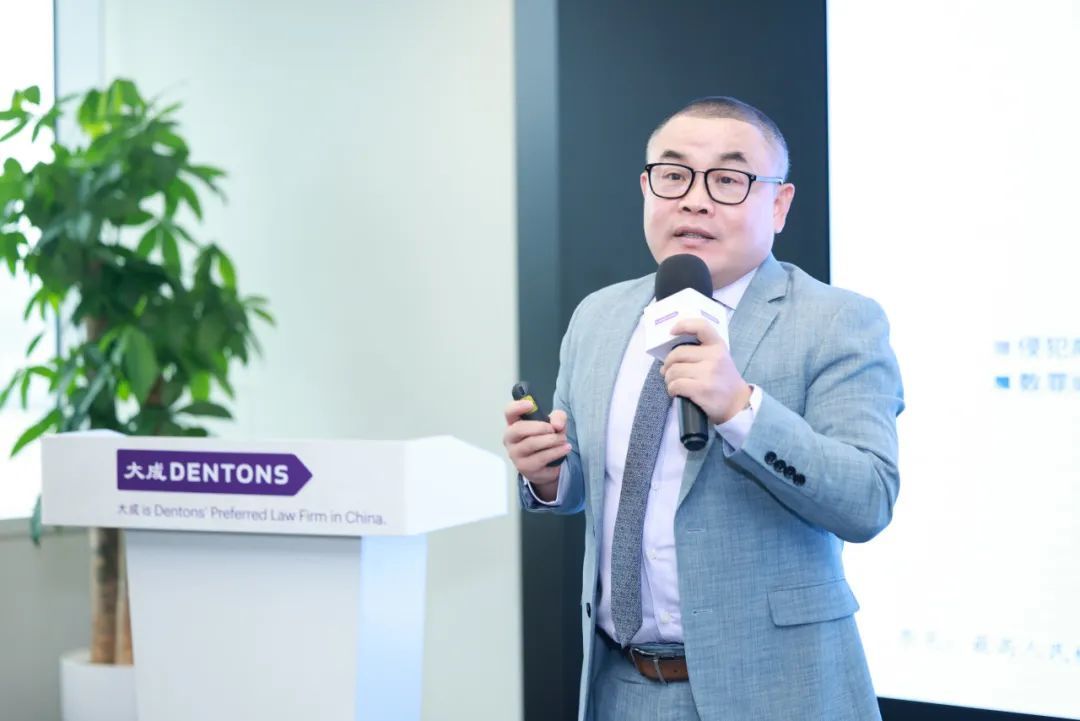
Lawyer Yu Siming, Director of the Anti-Fraud and Criminal Risk Control Committee of the Shanghai Lawyers Association and Senior Partner at Bohe Hanshang Law Firm (Shanghai), stated in his commentary that lawyers need to base their work on the professional positioning of legal defenders for enterprises. He then pointed out that in the face of systemic challenges in intellectual property rights protection practice, the success rate of rights holders remains persistently low, this phenomenon and its underlying causes merit focused analysis. Regarding remedies for infringed enterprises, he emphasized the importance of rationally utilizing criminal judicial means to broaden remedy paths and suggested that enterprises proactively identify and eliminate potential hidden risks through preliminary anti-fraud investigations to mitigate subsequent derivative risks. Addressing difficulties in remedy implementation, he noted that the availability of case filing support critically depends on the sufficiency of preliminary internal investigation evidence collection. Lawyer Yu concluded that anti-fraud investigation is not only the core link in risk prevention and control but also an important practical leverage for enterprises in constructing their defense system.
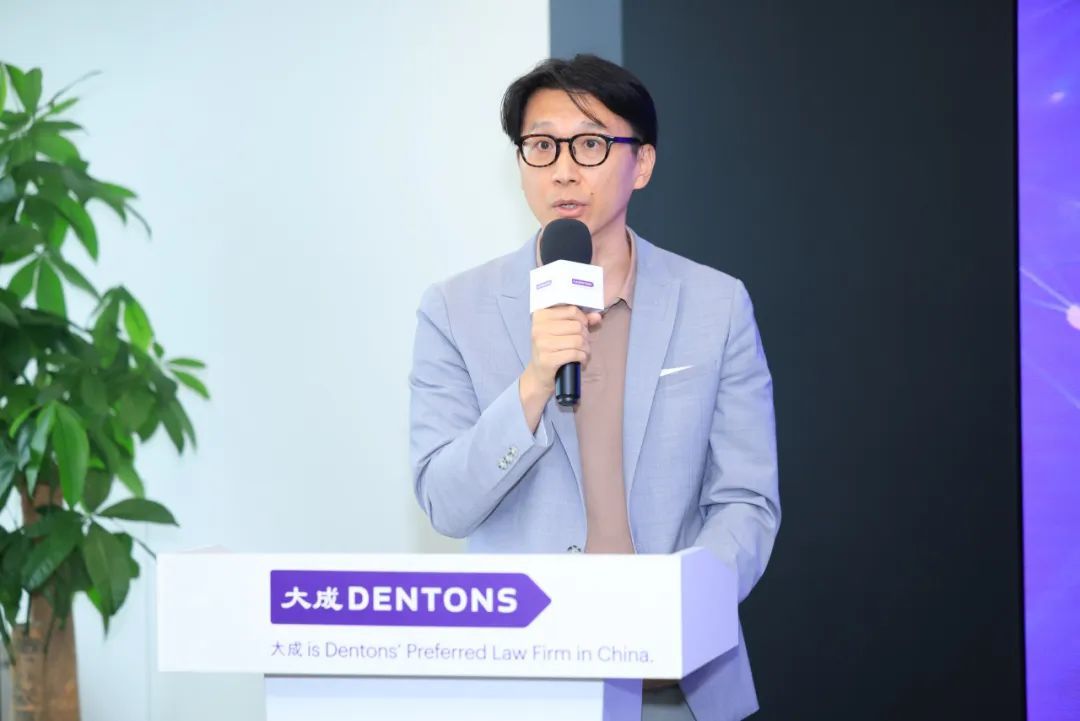
Lawyer Luo Genda, Deputy Director of the Anti-Fraud and Criminal Risk Control Committee of the Shanghai Lawyers Association and Senior Partner at JunHe Law Offices, stated in his thematic report "Sharing Techniques for Criminal Complaints in Trade Secret Infringement Cases" that the remedy strategy for trade secret cases can adopt a "criminal proceedings preceding civil litigation" (Xian Xing Hou Min) or a "parallel civil and criminal proceedings" (Xing Min Bing Jin) approach, and this form enjoys high client recognition. However, the main reasons for adopting this method in practice include: enterprises' limited understanding of trade secret infringement violations; the significantly stricter acceptance standards for criminal cases compared to civil procedures; and the generally low receptiveness of public security organs to accepting such cases. Nonetheless, the parallel proceedings strategy might trigger countermeasures like the opposing party taking preemptive defenses, thereby substantially increasing the difficulty of case filing. He suggested enterprises consider adopting the principle of "determine strategy before acting" (Mou Ding Er Hou Dong), prioritizing the "criminal proceedings preceding civil litigation" strategy, initiating civil litigation only after the criminal proceedings conclude. Lawyer Luo indicated that at the macro policy level, the intensity of criminal protection for intellectual property has been systematically strengthened through revisions to the Criminal Law, continuous updates to judicial interpretations, and adjustments to the appraisal mechanisms for judicial organs. At the practical operation level, after selecting the competent authority, enterprises should first promote the public security organ to accept the case before initiating judicial appraisal procedures.
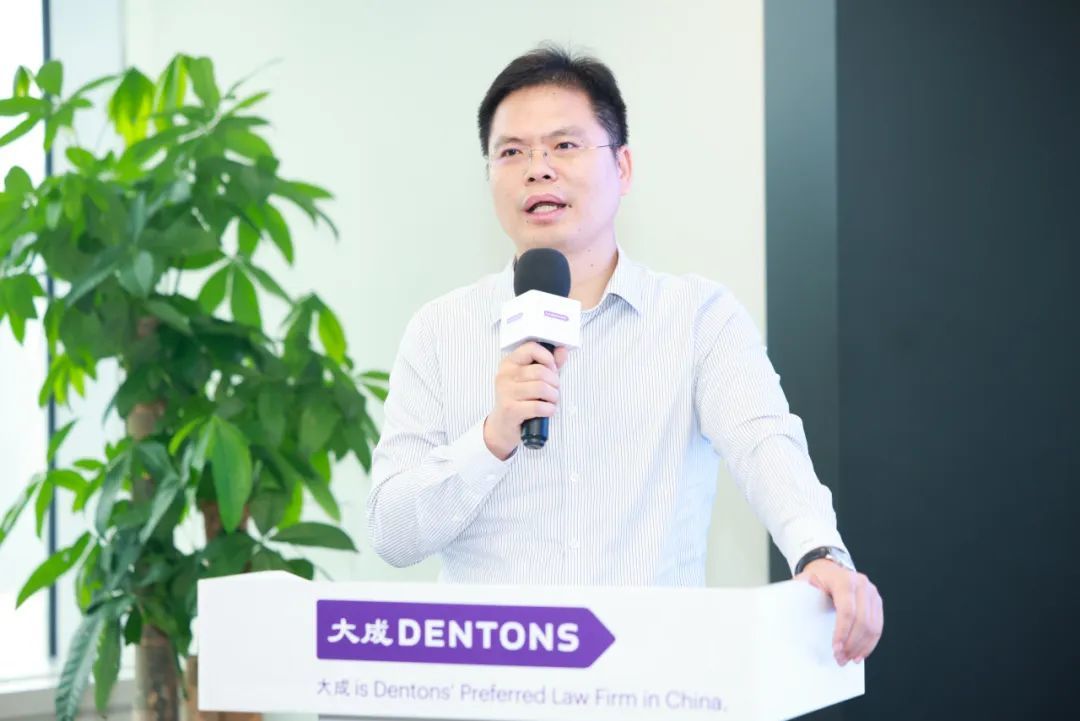
Lawyer Yi Zhixin, Member of the Intellectual Property Committee of the Shanghai Lawyers Association and Partner at AnJie Broad (Shanghai), systematically reviewed the legal basis, judicial interpretations, and case handling guidance reference system in his thematic report "Practice and Exploration in Criminal Prosecution of Employee Misappropriation of Secrets". He constructed a behavioral characterization analysis framework through a typological analysis of the employee subject (including those legitimately holding/accessing trade secrets and those not legitimately holding them) and a classification study of misappropriation behavior modes (covering acquisition by improper means, disclosure or allowing others to use after improper acquisition, and unlawful disclosure or allowing others to use after legitimate acquisition). The report further analyzed the constitutive elements of the "amount determination" in the criteria for establishing an offense and its calculation methods. Finally, combining practical cases, Lawyer Yi explained typical difficulties encountered during the handling of such cases and their solutions, providing practical references for efficient case resolution.
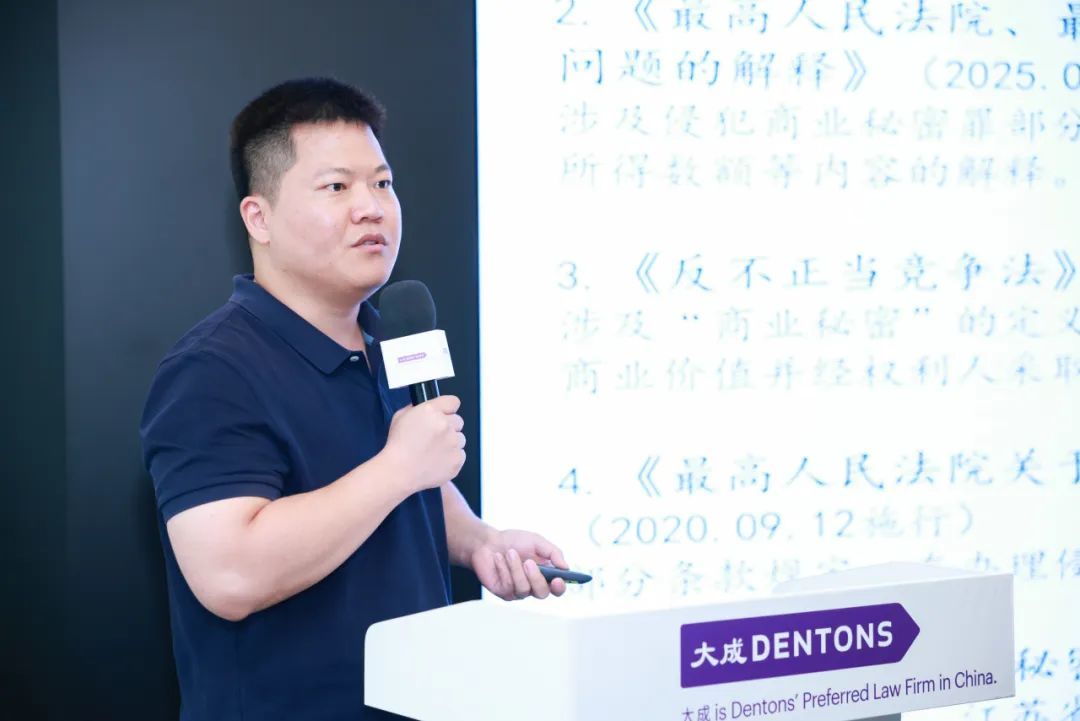
Lawyer Yang Jun, Member of the Anti-Fraud and Criminal Risk Control Committee of the Shanghai Lawyers Association and Deputy Secretary-General of the Dacheng Criminal Law Professional Committee, systematically expounded in his thematic report "Navigating the Business Sea with Legal Ships: The Way of Attack and Defense in Enterprise Digital Domain Trade Secrets" how the exponential growth in data scale drives the continuous iteration of algorithm efficacy; iterative algorithms guide code writing, which is compiled into executable object code; application operations generate massive new data, feeding back into the expansion of data scale, thereby forming a self-reinforcing closed-loop system. Based on this, Lawyer Yang pointed out that in the era of the digital economy, data, algorithms, and their corresponding codes are the core elements of trade secret protection. Subsequently, focusing from the defensive strategy perspective, Lawyer Yang emphasized his core proposition: the premise for "attack" to succeed is the existence of "defense". He then pointed out that the key to constructing an effective defense system lies in precisely grasping the differentiated characteristics and protection strategies of data, algorithms, and code regarding the three statutory requirements: "secrecy", "confidentiality measures", and "commercial value". Lawyer Yang, combining the key holdings and practical difficulties of multiple landmark national cases, deeply analyzed the specific application of these three elements within the trade secret protection framework, providing enterprises with highly practical compliance guidance and remedy strategies for the entire chain of data, code, and algorithm management and rights protection. Lawyer Yang's elaboration not only clearly outlined the dynamic evolution and internal logic of trade secret elements in the digital era but also, from the dialectical perspective of attack and defense, provided enterprises with a systemic risk control blueprint combining theoretical depth and practical wisdom to fortify their data asset moats.
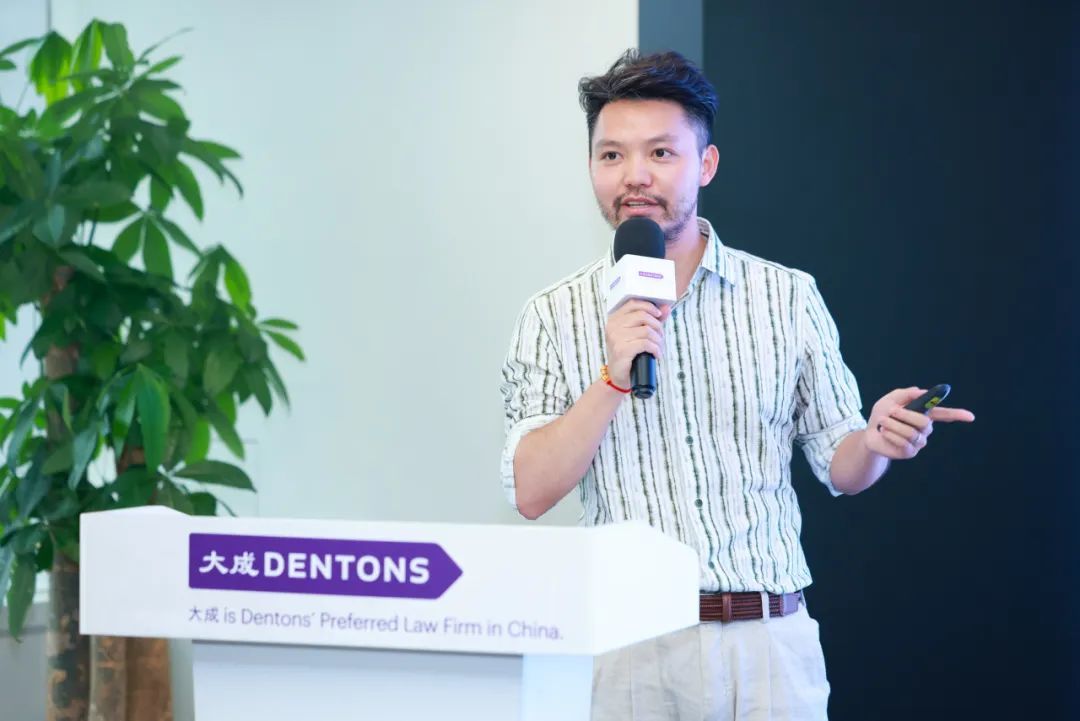
Lawyer Liu Minxuan, Deputy Director of the Intellectual Property Committee of the Shanghai Lawyers Association and Senior Partner at AllBright Law Offices (Shanghai), stated in his commentary that the trade secret intellectual property protection system needs to focus on safeguarding the rights and interests of innovation entities as its core value orientation, while continuously strengthening their awareness of legal and compliant operations. In current practice, ambiguities still exist in the standards for applying the law to trade secrets at both the criminal and civil recognition levels. Regarding enterprises implementing trade secret classification management mechanisms, he proposed adopting protection measures commensurate with the risk level and emphasized that enterprises should avoid premature classification in management when lacking basis. Finally, Lawyer Liu pointed out that case handling practice often faces the challenge that the value of enterprise trade secrets is difficult to assess objectively, hindering case progress; therefore, lawyers handling cases need to broaden their thinking to find solutions.

Lawyer Xu Zongxin, Vice President of the Shanghai Lawyers Association and Director of Shanghai Jing Lin Law Firm, first affirmed the outcomes of the seminar and extended thanks to the participating experts for their professional contributions. He stated that the intersection of the dual dimensions of criminal protection and the field of trade secrets can provide multiple analytical perspectives for individual cases. However, in practice, there are situations where the responsible party is ambiguously identified and criminal and civil proceedings intertwine concurrently, requiring lawyers to employ more systematic methods to resolve this dilemma. Furthermore, when focusing on specific cases, a single criminal or civil perspective struggles to handle complex legal predicaments, thus necessitating the pooling of wisdom from experts in multiple fields to discuss comprehensive solutions. Lawyer Xu concluded by emphasizing that lawyers should enhance their comprehensive case-handling capabilities, breaking through the limitations of thinking within a single practice area.
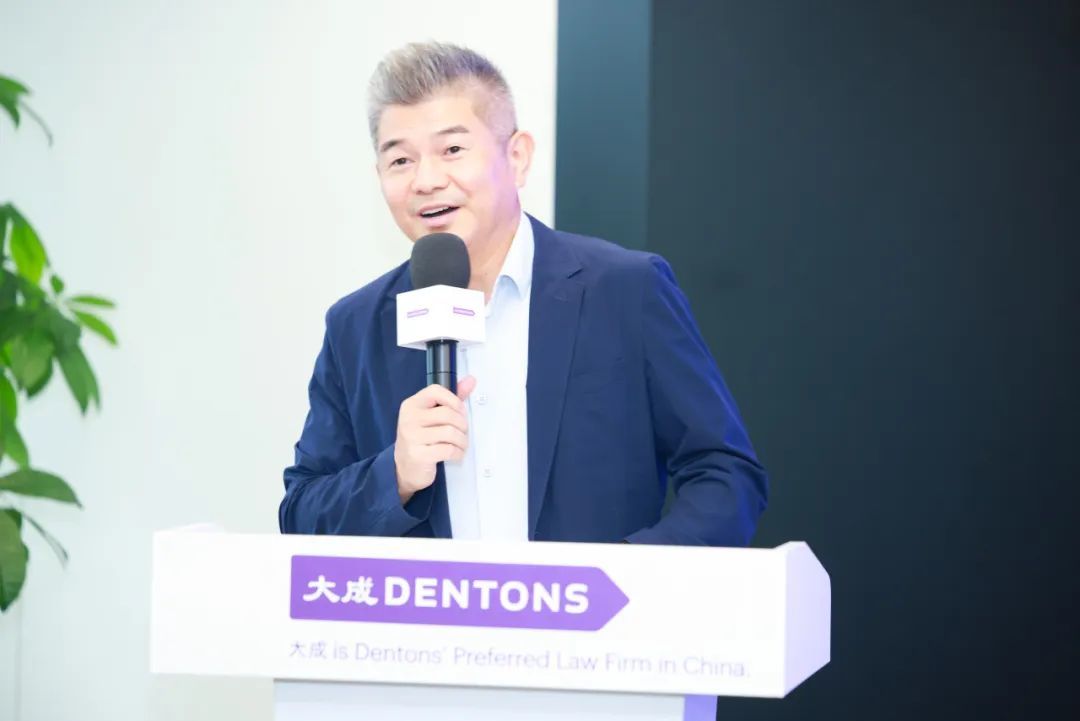
This seminar systematically mapped out the practical paths and pain points of criminal protection of intellectual property from an enterprise anti-fraud perspective through multi-dimensional discussions. Participating experts focused on key points such as fraud risk identification, case handling practice, and protection of innovation entities' rights, providing practical references for compliance system improvement from a cross-disciplinary perspective. In the fields of trade secret protection and anti-fraud, Dacheng Shanghai will continue to leverage its professional capabilities and industry collaboration to help enterprises solidify their intellectual property protection mechanisms, safeguarding innovation-driven development.
Related Lawyers





